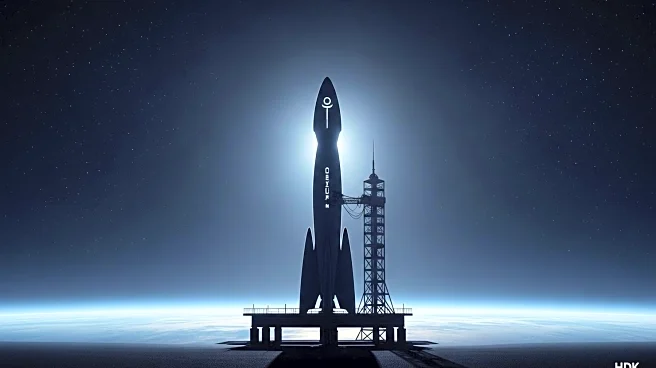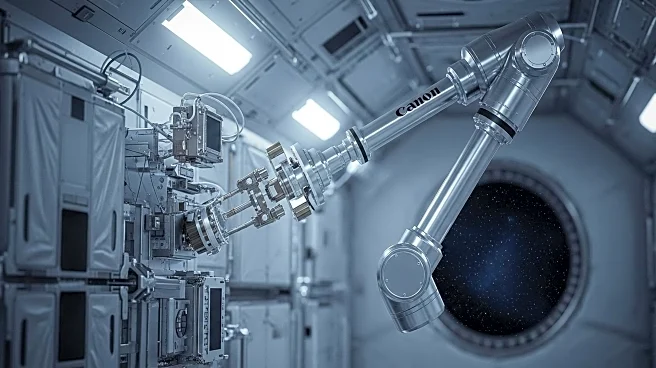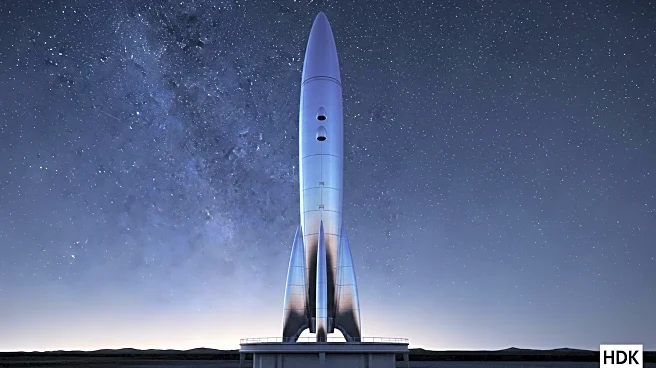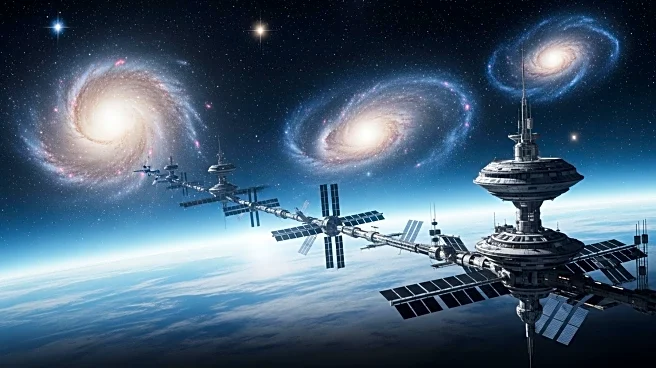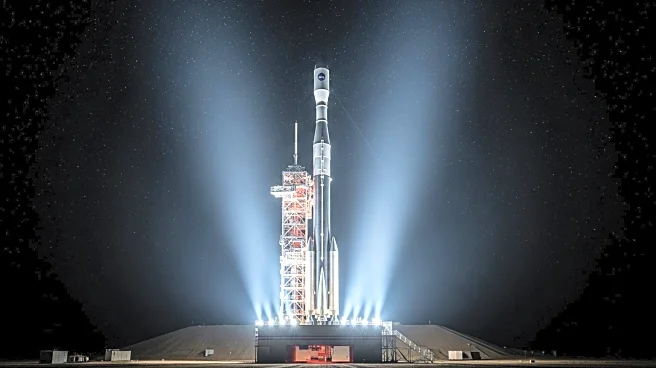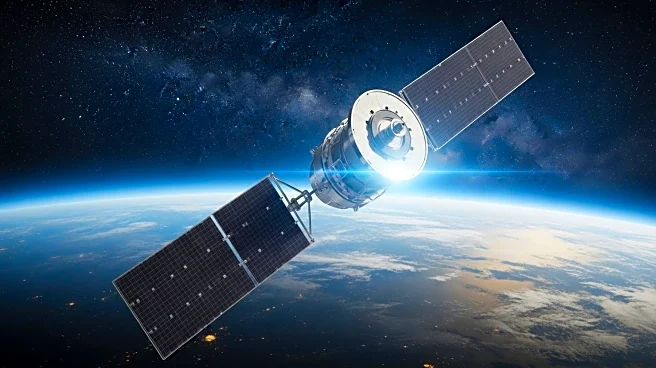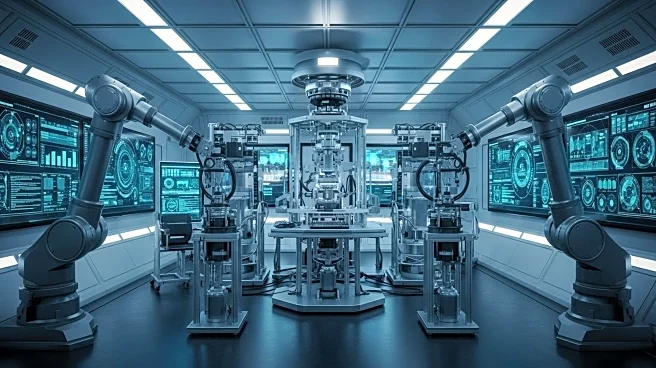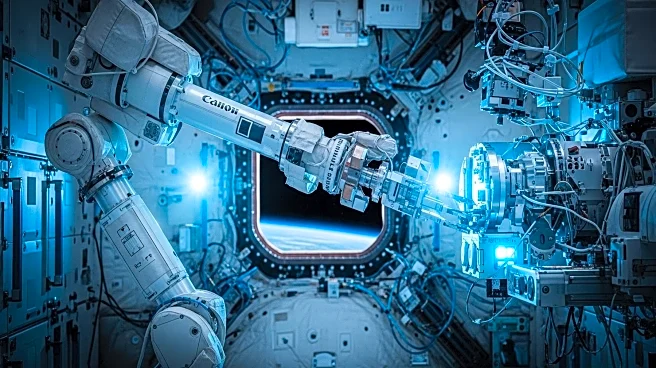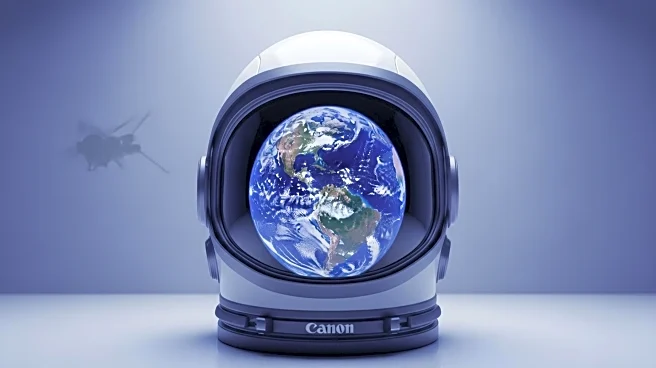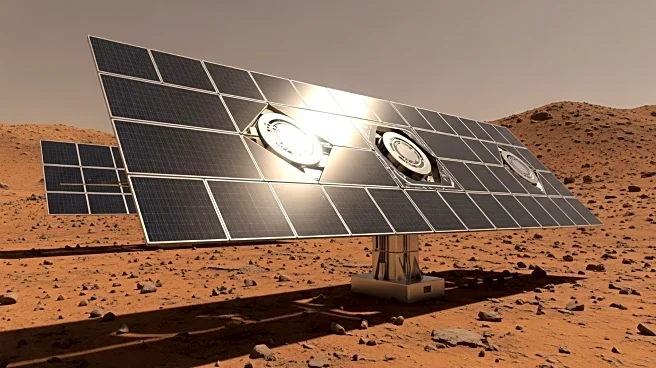What is the story about?
What's Happening?
NASA has successfully integrated the Artemis II Orion stage adapter with the Space Launch System (SLS) rocket at the Kennedy Space Center in Florida. This crucial component, developed by engineers at NASA's Marshall Space Flight Center, connects the rocket's interim cryogenic propulsion stage to the Orion spacecraft. The adapter is designed to protect the spacecraft from hazardous gases during launch and will deploy four CubeSats into high Earth orbit. These CubeSats, developed by international partners including South Korea, Germany, Argentina, and Saudi Arabia, will conduct science and technology experiments. The integration marks a significant step towards the Artemis II mission, which is scheduled for no later than April 2026. Preparations for the mission continue with testing and simulations, while work on the Artemis III flight hardware is also underway.
Why It's Important?
The integration of the Orion stage adapter is a pivotal development in NASA's Artemis program, which aims to return humans to the Moon and eventually send crewed missions to Mars. The successful deployment of CubeSats from the adapter will enhance international collaboration in space exploration, showcasing the global interest and investment in scientific discovery beyond Earth. The Artemis missions are expected to yield significant economic benefits and scientific advancements, as they lay the groundwork for sustainable lunar exploration and future Mars expeditions. This progress underscores NASA's commitment to maintaining its leadership in space exploration and fostering international partnerships.
What's Next?
As NASA moves forward with the Artemis II mission, the next steps include integrating the Orion spacecraft with the SLS rocket and conducting further testing and simulations. The mission is set to launch no later than April 2026, with the goal of sending astronauts to explore the Moon. Concurrently, NASA is advancing the development of flight hardware for Artemis III, which will involve further assembly and installation of critical components. The continued progress of the Artemis program is likely to attract attention from political leaders, international partners, and the scientific community, as it represents a significant leap in human space exploration.
AI Generated Content
Do you find this article useful?
